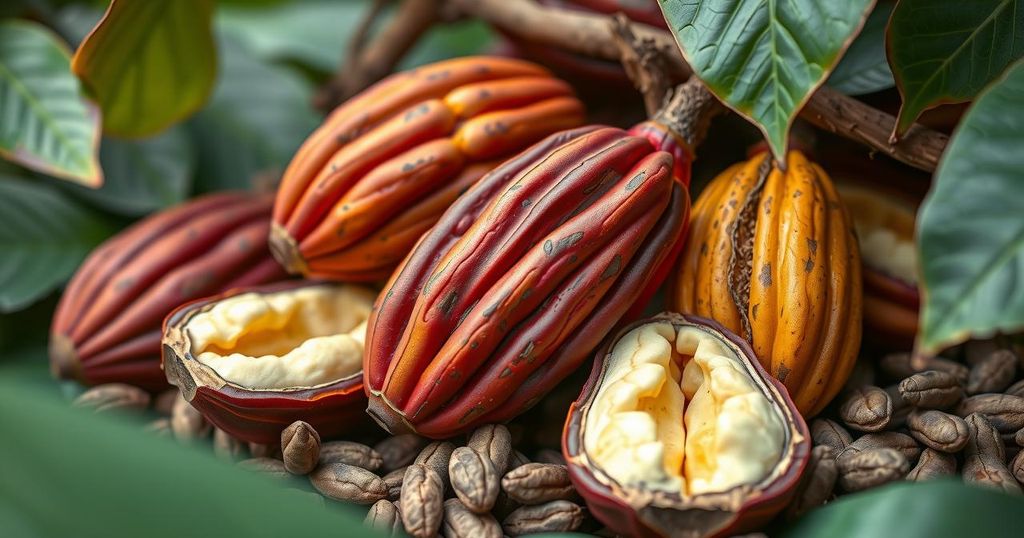Cocoa Prices Surge Amidst Crop Challenges in 2024

Cocoa futures have risen dramatically, with New York prices up 175% due to poor crop yields in Africa. As Ghana confronts several obstacles, prices reached $11,570 per metric ton, with predictions of further supply deficits. This surge contrasts with other commodities, highlighting critical food security issues exacerbated by climate change.
Cocoa futures are currently experiencing remarkable growth, with New York prices surging by 175% this year, primarily due to insufficient crop yields in Africa. As a result, New York cocoa futures have escalated to $11,570 per metric ton, fueled by various issues plaguing key cocoa-producing countries such as Ghana, which is facing challenges from aging trees, swollen shoot disease, and the adverse effects of climate change. Notably, prices peaked at $12,931 per ton on December 18. The International Cocoa Organization has reported a third consecutive global shortfall this season and has issued warnings of another potential deficit in the upcoming year. Concurrently, London cocoa futures are also on track for a significant 160% annual increase, despite minor fluctuations.
The implications of these cocoa price increases extend beyond simple market performance. While cocoa thrives amidst their struggles, other commodities, notably sugar, are facing an oversupply and expected annual losses. Moreover, coffee production is beset by weather-related challenges in leading countries such as Brazil, yet it still exhibits potential for gains. The rising prices of cocoa underscore significant concerns related to food security and climate resilience in African countries, highlighting the possible systemic challenges within global agriculture and supply chains.
The article highlights the striking increase in cocoa prices, particularly within the New York futures market, attributing this surge to several detrimental factors affecting cocoa production in Africa. Among these factors are the aging infrastructure of cocoa trees, plant diseases, and the broader impacts of climate change. Such issues reach far beyond the cocoa market, illustrating wider implications for food security and potential economic stability in affected regions. Additionally, comparisons with other commodities demonstrate cocoa’s relative resilience, despite unfavorable conditions elsewhere in the agricultural sector.
In conclusion, the significant rise in cocoa prices, driven by ongoing supply challenges in African-producing countries, presents both opportunities and risks within the commodity markets. The stark contrast between the performance of cocoa and that of other commodities serves to underscore the complex dynamics influencing global agriculture. Moreover, the potential consequences on food security and climate resilience warrant closer examination as these factors continue to evolve. Future market participants must remain vigilant regarding the broader implications of cocoa’s performance, particularly as climate change threatens agricultural stability and food supply chains across the globe.
Original Source: finimize.com








